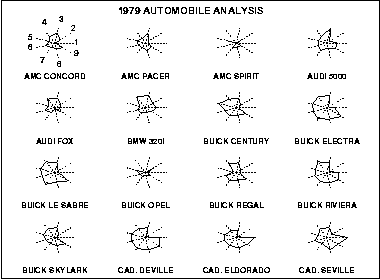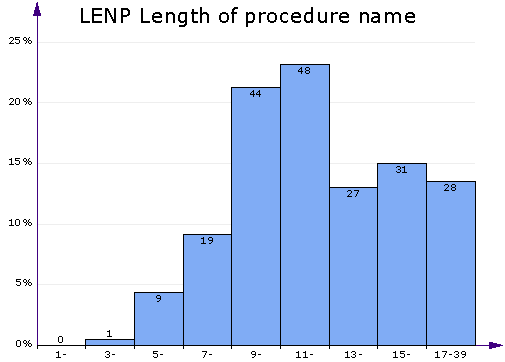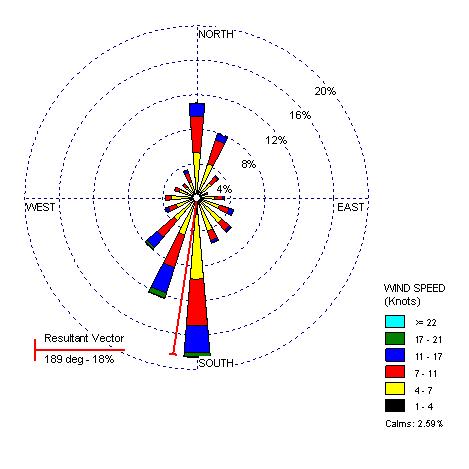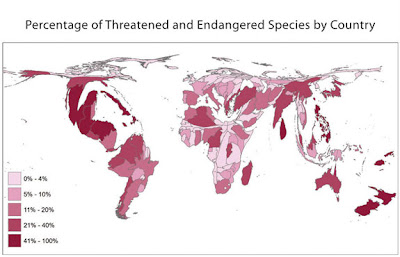 - Star plots allow you to compare multiple variables for each observation.
- Star plots allow you to compare multiple variables for each observation.- This star plot was used to represent the differences in automobiles in 1979. I thought this was kinda of cool to see how different individuals came up with the different ways to star plot a vehicle.
- http://www.itl.nist.gov/div898/handbook/eda/section3/gif/starplot.gif















































